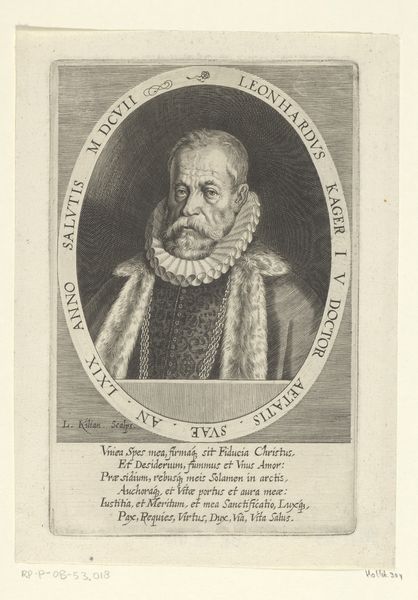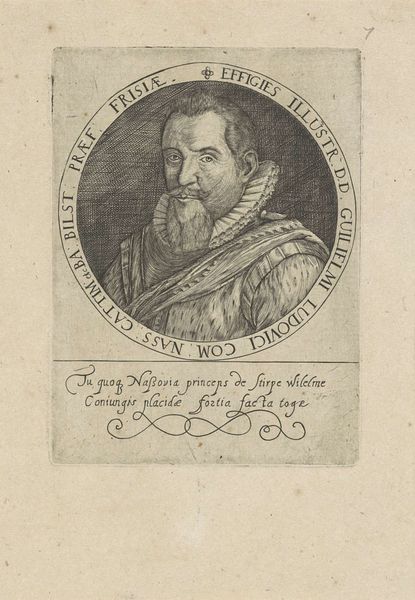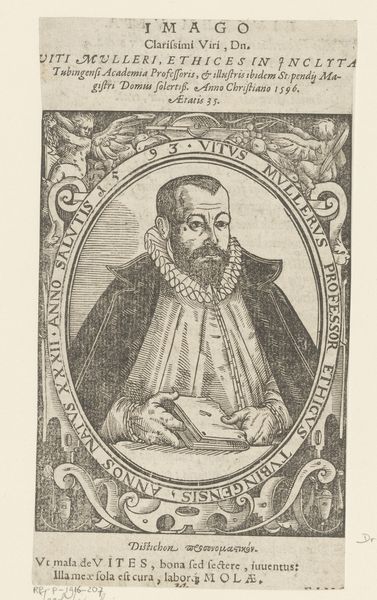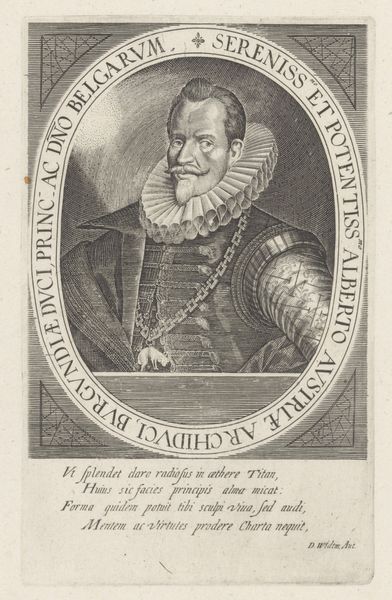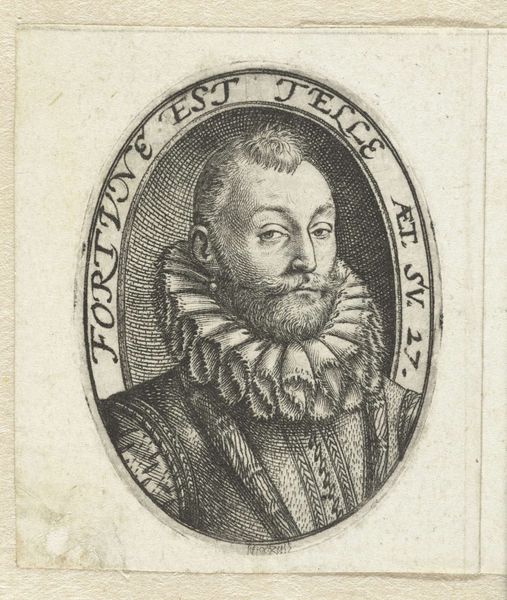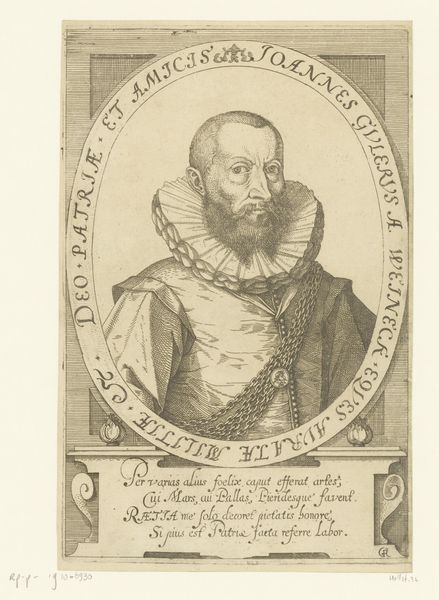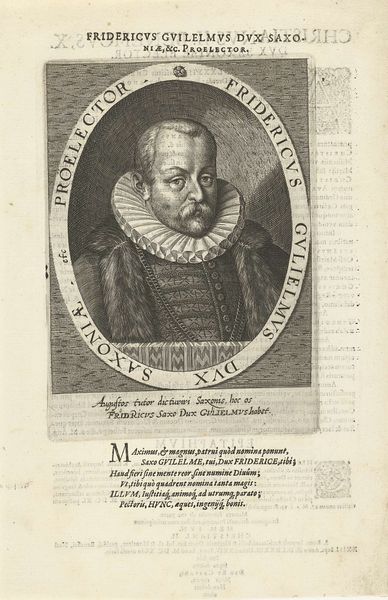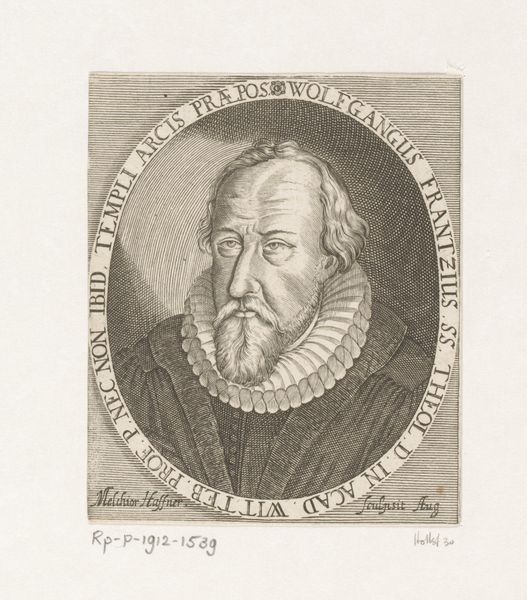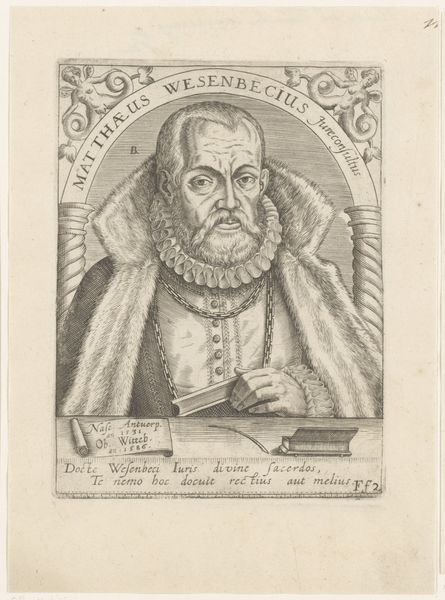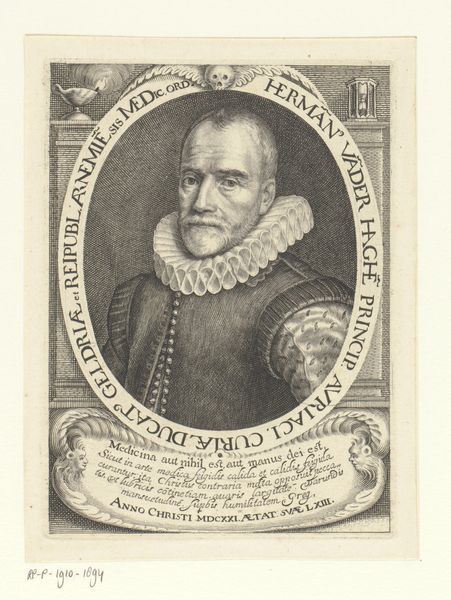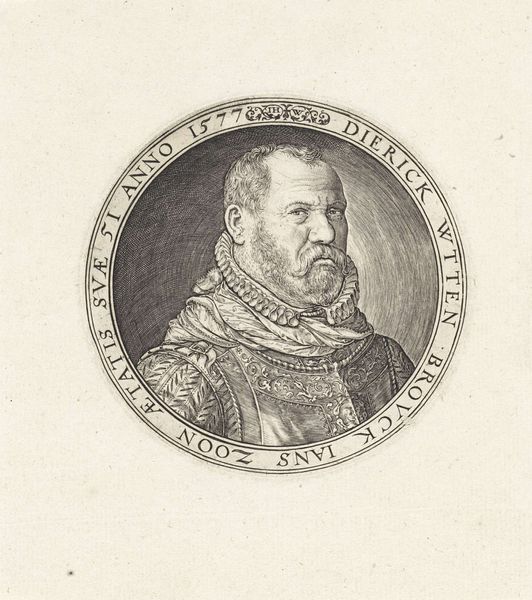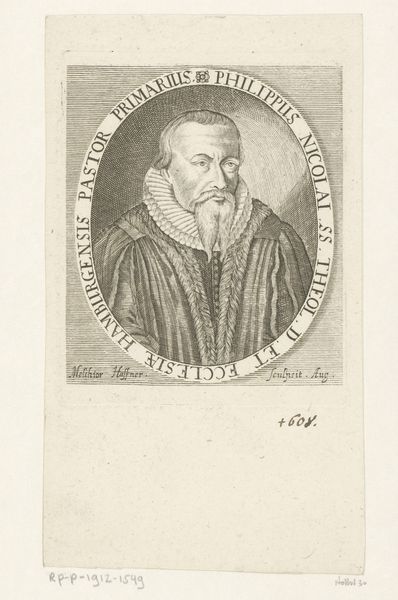
engraving
#
portrait
#
old engraving style
#
mannerism
#
personal sketchbook
#
geometric
#
history-painting
#
engraving
Dimensions: height 160 mm, width 123 mm
Copyright: Rijks Museum: Open Domain
Editor: Here we have Johan Barra's "Portret van graaf Joachim von Ortenburg," an engraving from 1599 currently residing at the Rijksmuseum. The detail is incredible for its time. It really gives you a sense of the Count’s…gravitas. How would you interpret this work? Curator: The engraving is fascinating from a historical perspective. Notice the date, 1599. This period was fraught with political and religious tension. The meticulous detail almost serves to solidify the Count’s image, reinforcing his authority at a time of uncertainty. What do you make of the Latin inscription surrounding the portrait? Editor: Well, looking closely, I see it includes his name and title, “Joachim Comes ex Antiquioribus in Ortenburg”. Curator: Exactly. And the inclusion of “Antiquioribus”, from ancient or noble roots, links him to a prestigious lineage, bolstering his social standing through a claim to tradition. Engravings like these weren’t simply portraits, but carefully constructed pronouncements of power. They played a key role in how people viewed him. Editor: That's a really interesting point, I hadn’t considered how the inscription contributes to this sense of carefully managed presentation. Curator: Think about where these images would circulate – among other nobles, perhaps even displayed publicly. They weren't passive depictions but active tools of self-representation within the visual and political culture of the time. Is there anything else that catches your eye? Editor: Now that you mention it, the object on the table… almost like a lantern… what could that signify? Curator: Perhaps it indicates his wisdom and enlightenment, aligning with the desired public image. Consider how these portraits shaped societal power dynamics. Editor: It's like propaganda but with much finer lines! I’ll definitely be considering that aspect of political presentation moving forward. Curator: Precisely. These works show that art never exists in a vacuum and played a critical role in how the public consumed imagery.
Comments
No comments
Be the first to comment and join the conversation on the ultimate creative platform.
